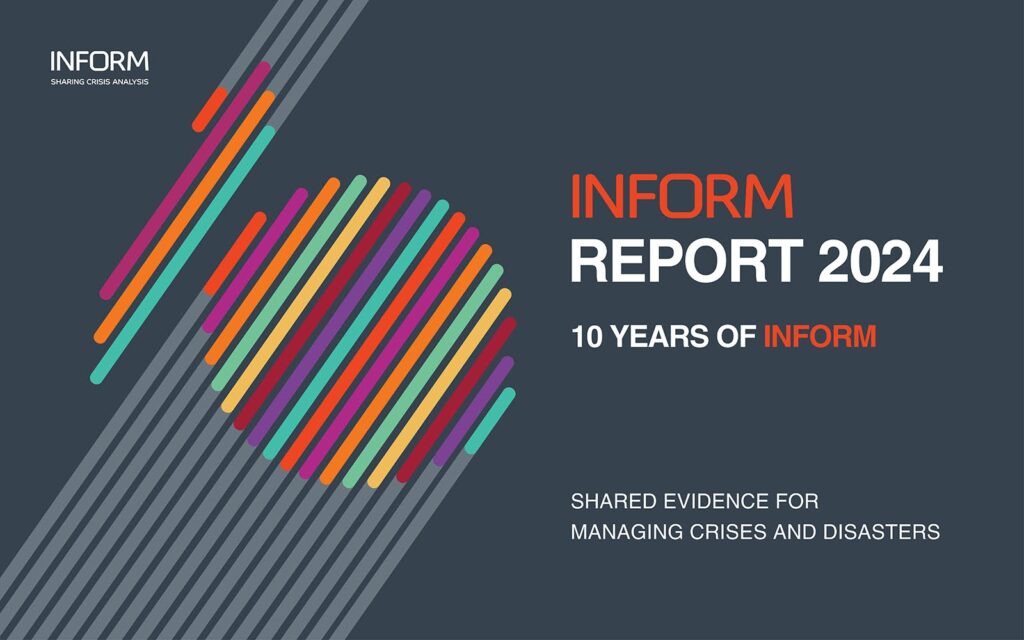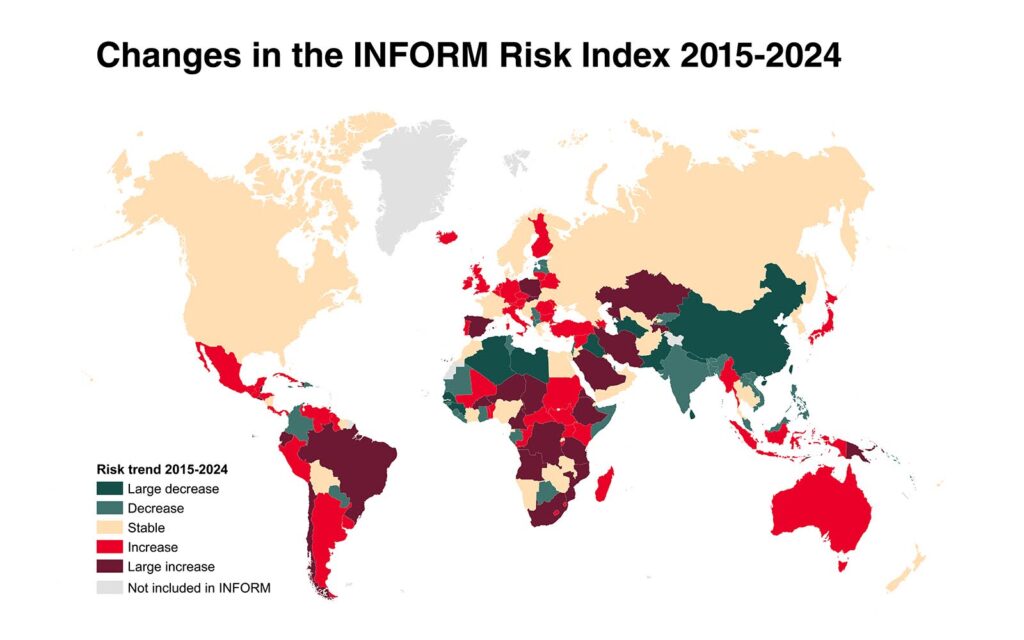Share
This year marks the 10th year since the launch of the INFORM Risk Index. INFORM partners first came together in 2014 to create an open index for measuring the risk of humanitarian crises globally. Since then, the INFORM Risk Index, INFORM Severity Index and INFORM Climate Change Index have become established inputs into the decision-making systems of INFORM partners and organisations across the multilateral system. INFORM partners are currently developing INFORM Warning, which will help support decisions on anticipatory action.
 The INFORM Report 2024 analyses trends in crises and crisis risk since 2014. Some of the findings include:
The INFORM Report 2024 analyses trends in crises and crisis risk since 2014. Some of the findings include:
- Over the last ten years, there has been a general increase in the risk of humanitarian crises at global level. While there has been an improvement in coping capacity, this has been negated by large increases in the number of people exposed to hazards, and to their vulnerability.
- There has been an increase in the average risk of crises in all regions except Asia. The largest increase has been in the Americas and can be attributed to considerable increases in Human Hazard and Uprooted People. Africa remains the highest risk region and where 10 out of 15 of the highest risk countries are located.
- The majority of crises (>70 percent) tracked by the INFORM Severity Index are driven by human factors (displacement, conflict, violence, political instability). The main changes in the country-level risk of humanitarian crisis over the last 10 years are largely correlated with changes in the Human Hazard (conflict, violence, political instability).
- The average annual exposure to sudden-onset natural hazards (river flood, coastal flood, cyclone, earthquake and tsunami) reached 184 million people in 2023 – an 8.6 percent increase since 2014. Climate-related hazards (river flood, coastal flood and cyclone) are responsible for 95 percent of the absolute increases in the number of people exposed to hazards over the last 10 years.
- Climate change will increase the risk of humanitarian crises in all regions. Under more pessimistic climate and socio-economic scenarios, by 2050, the number of countries classified as having ‘high’ or ‘very high’ crisis risk will increase from 36 today to 52. Certain regions – especially Africa – and low and lower-middle income countries will be worst affected. Drought is likely to be the most important driver of increasing crisis risk as a result of climate change.
 The report also looks back on how INFORM has developed over the last decade. Consultations with partners and users suggests that key ingredients of INFORM’s success are that:
The report also looks back on how INFORM has developed over the last decade. Consultations with partners and users suggests that key ingredients of INFORM’s success are that:
- INFORM uses a collaborative development process, bringing together users with experts. This has led to the development of products that are user-driven and scientifically rigorous, as well as a shared understanding of crises and crisis risk.
- INFORM products are available for the common good. They are based on publicly available data and made freely available to anyone. The methods used are also published and transparent. This increases their credibility and wide acceptance.
- INFORM is also a community. Partners come together to develop INFORM products, as well as share experience of their use in decision-making. The connections made through INFORM have led to new and shared approaches to crisis and risk analysis and management.
INFORM is a collaboration of the Inter-Agency Standing Committee and the European Commission. The Joint Research Centre of the European Commission is the scientific and technical lead of INFORM. This report is based on the data available at inform-index.org which can also be found on HDX. The INFORM 2024 report was produced by OCHA on behalf of all INFORM partners.
The Centre oversees OCHA’s contribution to INFORM, which is aligned with its work to use data science and risk analysis for preemptive decision making. For more information, visit inform-index.org or the Centre’s resource library link.